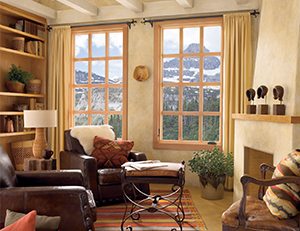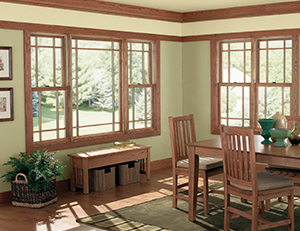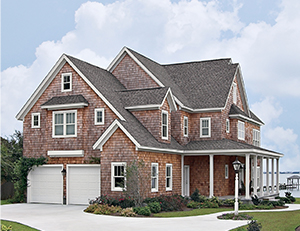
February 28, 2020 by WindowRama
How To Winterize Your Home
Winterize your home
For homeowners living in climates where they experience four seasons, planning ahead is critical. Learning how to winterize your home in 2025 is something you cannot let slip by when the cold months come. In order to stay comfortable and keep your home functioning year-round, a little prep work is required before each change in the weather — be it between snow and sunlight or vice versa.
Perhaps the most involved seasonal change is that between autumn and the winter months. The arrival of frigid temperatures and routine snowfall presents unique challenges to homeowners — increased energy usage, outdoor preparation, and more.
While it’s never too late to begin winterizing your home, being proactive is key. Below are a few useful tips for winterizing your home and how to help you get started on the process.
Keep cold air out

The most common reason for winterizing your home is to keep it warm during the winter months. Naturally, the easiest way to do this is to prevent it from getting cold in the first place: The less cold air that enters your home, the less work (and energy) required to offset it. This may sound intuitive, but it’s easier said than done.
There are a number of different ways cold air can enter into a home — through the windows, the roof, doorways or floors. Some of these signal malfunctioning (such as, say, drafty windows), but some are natural and unavoidable in any home. The best way to prevent this is to install additional layers of insulation.
Add weatherstripping to winterize your home
- Weatherstripping is an easy, affordable way to close the air gaps between your doors, windows, and other openings — cracks that allow in cold air if they go unaddressed. Weatherstripping is available in a variety of materials (vinyl, felt, foam, and more), and the installation process is easy. Once installed, it helps with drafts and keeps out melted snow, bugs, etc.
Insulate windows
- Even when prepped with weatherstripping, windows are one of the primary entry points into the home. So, covering them is an effective way to prevent cold air from getting in. For those that do not get used often, add window insulation film — plastic covers that work especially well. For others, hand thick curtains, ideally with thermal lining.
Use door thresholds
- In order to seal large air leaks in, say, exterior doors, you may have to think bigger than weatherstripping. Door thresholds are a great alternative. Much like weather stripping, they block cold air from entering your home. However, unlike weather stripping, they are larger and involved — making them suitable for even a garage door.
Help your furnace

Staying warm in the winter requires more than great insulation. No matter how effectively you prevent cold air from entering, you are going to need to head up your home — be it from a fireplace, a central heating system, or a space heater. If you are not careful, this gets expensive quickly.
Regardless of the system you choose, relying too heavily on heat can quickly spike up every energy usage and, in turn, raise energy bills. So, in order to save money and lessen your impact on the environment, consider making a few minor adjustments:
Improve airflow
- The easier it is for warm air to travel throughout your home, the less warm air will be required to heat it. Simply rearranging your furniture to maximize airflow can help you warm up rooms quicker and, in turn, save money. To start, move large pieces of furniture away from any heating source. Heating sources should have a clear air path for air circulation.
Insulate pipes & water heaters
- During cold weather months, pipes can freeze or burst if they go unused for too long. However, they also play an important role in your home’s efficiency when they are being used. As water travels along the plumbing lines, hot water tends to lose heat and cold water tends to gain heat. To prevent these inefficiencies, introduce pipe insulation — such as a pipe sleeve and electrical heat tape.
Run a humidifier if possible
- Humid air feels warmer to the skin. So, bumping the humidity in a dry home to ‘safe’ levels can help prevent you (and some thermostats) from raising home temperatures. As the cold weather settles in a whole house humidifier can help make the air in your home healthier and more comfortable.
How To Winterize Your Home – Prepare the outdoors

When it comes to winterizing your home, the process is not complete until you pay attention outside. So, whatever you do, don’t go spending all of your efforts indoors. It’s not enough to simply improve insulation or energy efficiency. Outside, where snow falls and the cold comes from, present just as many opportunities to prepare for the storm.
Clean gutters
- Throughout the autumn months, leaves and other debris are bound to build up in your gutters. If unattended to, this can cause a water back up that damages roofing, siding and wood trim — plus cause leaks and ice dams. So, as you prepare for your winter, make sure you clean the gutters. Remove leaves, twigs, and gunk. Also, make sure the gutters aren’t sagging and trapping water.
Add gutter guards
- As snow melts, your gutters take water in and carry it to a place away from the side of your home to prevent moisture damage. If there’s too much water, or if the snow melts too slowly, you may begin to see problems. To avoid this, consider installing gutter guards on your home: A heated gutter guard will speed up the rate that ice and snow melts, as well as preventing icicles from forming overnight.
Protect air conditioner
- While most air conditioning units are built to withstand harsh winter weather, they are not built to keep out leaves, seeds, nuts, and other debris. When this debris gets into your air conditioner, it can invite moisture, which then causes corrosion and can even block drainage. To prevent this, remember to cover your central air unit before autumn arrives.
Getting started
While it’s always best to be proactive when starting to winterize your home, it is never too late to take additional steps to keep your home comfortable and secure.
Hopefully, the winterizing your home checklist above is enough to help you get started. For more information about specific parts of the process — say, how to reduce heat loss from your home — be sure to keep your eyes on our blog.